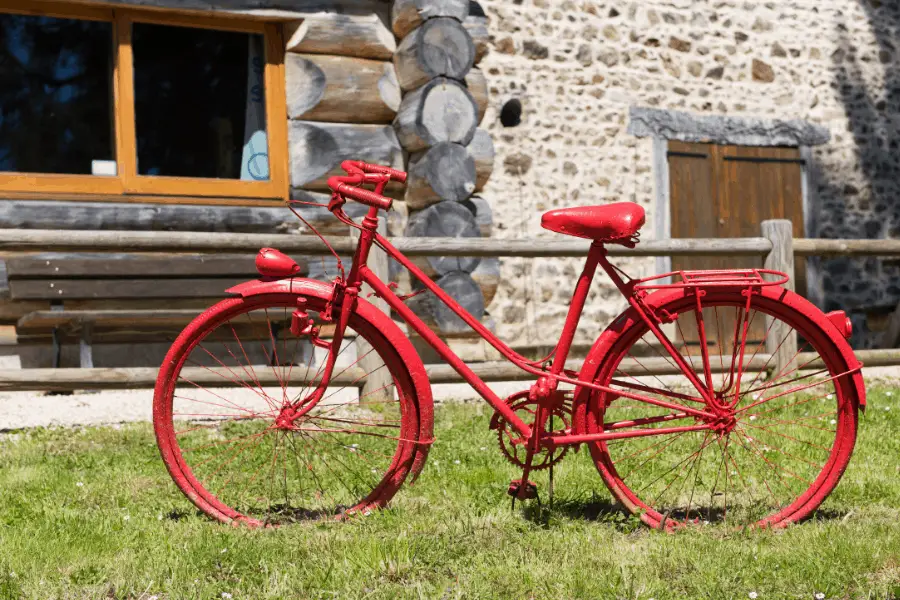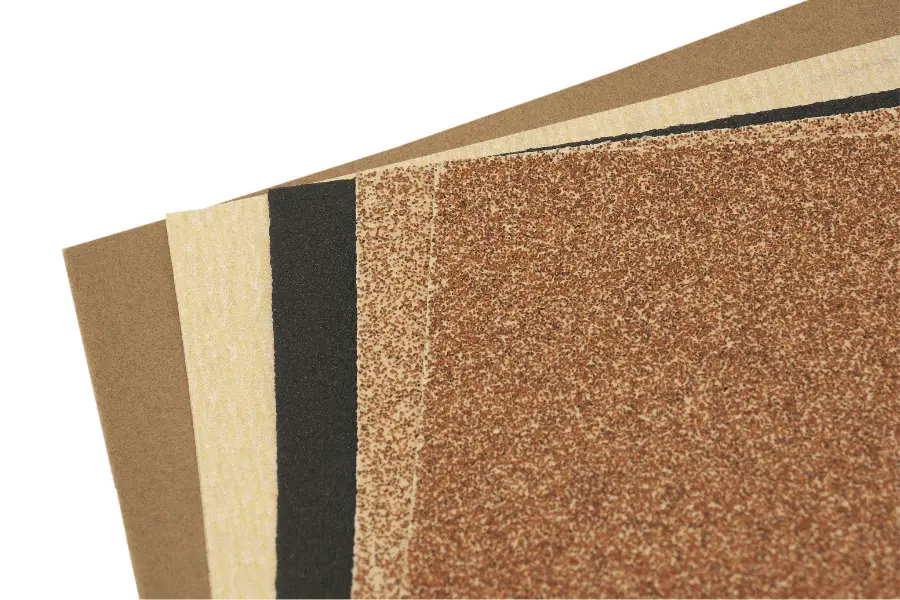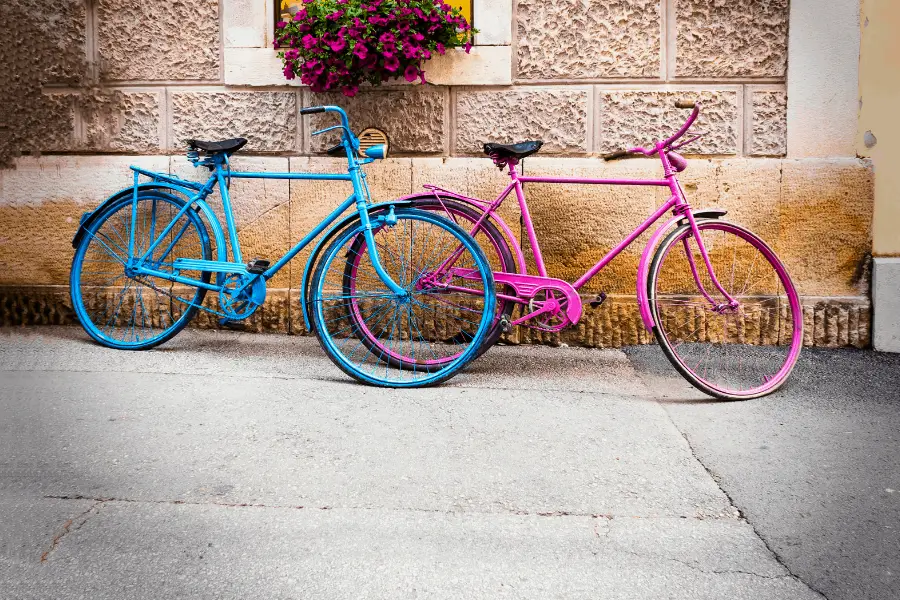If you are looking for a new and fun way to spice up your bike, you might be wondering if you can paint it. Whether you are painting the entire frame, or doing designs, using the right type of paint is always important in any project.
So, can you use acrylic paint on a bike? Yes! Acrylic paint is one of the best types of paint for bicycles. Acrylics work great on aluminum and metal surfaces. In order to paint your bike with acrylics, you just need to follow a few steps so you can properly paint and seal your bike.
You will need acrylic paint, sandpaper, primer, paint brushes, and acrylic paint varnish. In this article we go over everything you need to know for using acrylic paint on bicycles. Let’s read on!
Using Acrylic Paint on Your Bike

Most bikes are made with aluminum or steel. Both materials are heavy-duty metal, but you still want to make sure to not use anything harmful or corrosive to the bike. If you do, the bike can get damaged, and you may need to buy a new model prematurely. Acrylic paints are usually the best option when it comes to painting a bike.
My favorite and top pick is always Arteza Acrylic Paints. They have so many different colors, and the quality is amazing! I usually use Arteza Paints for all my projects.

Generally speaking, acrylic paint will not damage or corrode either an aluminum or steel bike, but you need to know how to properly apply it. You will also need to prime the surface before you paint it, to ensure the paint adheres to the metal surface.
I highly recommend using Liquitex Primer. It works great on all surfaces, and can also be used with oil paints and gouache.

Before priming your surface, you may also need to sand it down, if the surface is uneven or if rust has formed. I recommend using a fine grit sandpaper block, and then apply your primer.
How To Paint A Bike With Acrylic Paint

To paint your bike with acrylic paint, you need to paint the bike correctly. If not, the paint will not properly adhere to the bike, meaning that it will easily chip and peel off after a short time.
1. Prepare The Bicycle
Sand the area you intend to paint. Make sure to get the coating off the bike so that the paint can adhere to the metal material. At the very least, sand off the outer lacquer of the bike.
Once you have sanded all of the areas you want to paint, cover the bike parts that you don’t want the acrylic paint to touch. This will likely include the wheels, saddle, handle, pedal, and chain. Acrylic paint is oil-based, so it will not come off materials like fabric once it has dried.
2. Apply Primer
Next, apply a layer of primer to the surface. You may need 2 coats depending on the original color and condition. The primer should be fully dry in a few hours. If you applied more than 2 coats, I recommend letting it sit for atlas 12 hours to ensure it’s fully dry.
3. Paint Acrylic Paint
After confirming that the primer is dry, you can move on to painting the bike with acrylic paint. If you are super artsy, you can hand paint the bike yourself. Using a paintbrush will give you enough control to do delicate designs.
4. Seal Your Paint
Once you’re done painting your bike, you will have to seal the acrylic paint. This protects the paint from flaking, chipping, and rust. I recommend using Krylon Triple Glaze to seal your acrylic painted bike. One to two layers is more than enough to protect your paint.

You can also mix the acrylic paint with water to create spray paint. Add water to a spray bottle with the paint while testing the thickness of the paint. You don’t want it so wet that it drips everywhere, but you don’t want it so thick that it can’t leave the spray bottle. Shake before use and let dry once done. You may need to repeat the coats several times.
Do You Have to Sand a Bike Before Painting?

You should sand a bicycle down if you want to remove the old paint on it, or if you notice that there’s rust on there surface. Sanding down any project before applying primer is always a good idea, that way you start off with a nice smooth surface.
I like to use this Sandpaper Block to sand down metal or other hard surfaces. Simply sand down the area a few times, and it should be good to go. Sanding your bike is also a great way to get rid of bumps or any other debris that’s been stuck on the surface for a while now.
Do You Have to Prime a Bicycle Before Painting It?

If you want to paint your bike with acrylic paint, you absolutely must prepare the surface first. The bike is likely to have a protective coating around the body.
This coating will prevent the acrylic paint from adhering to the body correctly. Prepare the bike by sanding it and applying an acrylic friendly primer, to ensure the paint will adhere to the surface.
I always recommend Liquitex Primer because they offer great coverage, don’t have a bad odor, and also work with gouache paints!
After you sand down the surface, apply 1-2 coats of primer. You will need to let it fully dry before you start painting. Depending on how many layers you uses, it should be dry in about 1-6 hours. Once it’s dry, you can begin applying your paint.
What Is the Best Paint For a Bicycle Frame?

Other than acrylic paint, another option is an enamel finish spray paint. This will give your bike a beautiful color, but it will also protect the bike and prevent it from rust. You will need to do multiple layers of the paint, and you can add a clear finishing coat to add a glossy finish.
What Paints Should I Avoid on My Bicycle Frame?

Do not use paints that are intended for other materials like fabric or wood. Although these paints are unlikely to hurt the bike, you will probably waste a lot of time and money because the paint will likely chip off after a short period of time.
Oil paints, watercolors and gouache paints aren’t really recommended to use on bicycles. Stick to spray paint or acrylic paints for the best results.

Additionally, do not combine different spray paint brands. Some of the brands may react badly when exposed to one another. Be safe by using a single brand.
How to Seal Acrylic Paint on a Bike

To seal your painted bicycle, you will want to apply a few coats of acrylic varnish. You can choose from either a spray-on varnish, or a brush-on one.
For a spray varnish, I recommend using Krylon. This is a great brand that offers protection against flaking, chipping, and even UV rays! I usually use Krylon with my acrylic paint projects.

If you want to use a brush-on varnish, I like to use Liquitex Gloss. It offers the same protection as a spray varnish, but you will need a paintbrush to apply it.

They both offer great protection, and keep your painted project safe. If you decide to go with the brush-on varnish, you will need a brush like this one here to apply it.
Final Thoughts
Painting your bicycle is a great way to improve its look, or you may simply be restoring one. Acrylics are great to use on surfaces like a bike, whether you are covering the entire frame, or just adding simple designs to it.
You will need to prepare your surface by sanding it, adding a primer, and then painting it, in order to get the best look for your bike. Once it’s dry you can apply the acrylic paint varnish.
Make sure to follow all my tips and recommended products to ensure your acrylic painted bike turns out great! Also, don’t forget to check out my other articles for all your painting Q&A’s. Happy painting!

